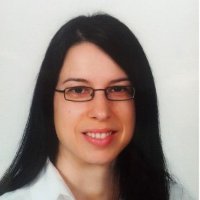From Bioblast
| News and Events | Working Groups | Short-Term Scientific Missions | Management Committee | Members |
COST Action CA15203 (2016-2021): MitoEAGLE
Evolution-Age-Gender-Lifestyle-Environment: mitochondrial fitness mapping
Saric A
MitoPedia topics: EAGLE
COST: Member COST WG1: WG1 COST WG2: WG2
| Name | Saric Ana, PhD |
|---|---|
| Institution | Ruđer Boskovic Institute |
| Address | Bijenicka cesta 54, |
| City | Zagreb |
| State/Province | |
| Country | Croatia |
| [email protected] | |
| Weblink | |
| O2k-Network Lab |
Labels:
Publications
Add references to your publications
Abstracts
MitoEAGLE Short-Term Scientific Mission
- Work Plan summary
- As a biomedical scientist particularly specialized in the oxidative stress pathways that regulate aging, I am currently working as a research associate at Rudjer Boskovic Institute in Zagreb, Croatia. After obtaining Ph.D. in Physiology and Immunobiology, my research has focused on mitochondria implications in aging pathways. Thanks to EUFP7- MSCA project I had successfully launched (2016) and executed an international project of development of the new mitochondria-targeted fluorescent probes for flow cytometry and confocal microscopy. Now I want to continue making my contribution in elucidating implication of mitochondria in aging and cell differentiation process. With a help and support of Anne-Sophie Armand from Mario Pendeáżľs team at Necker Institute (INEM) in Paris, I would like to tackle the implication of mitochondria in the satellite stem cell differentiation process in mice. Recent studies have shown that metabolic shift from glycolysis to oxidative phosphorylation is a hallmark of satellite cell differentiation. This shift is a prerequisite to meet the high energetic demand of activation process with concomitant changes in mitochondrial mass, morphology, and functional properties. However, little is known about the molecular mechanisms regulating mitochondria activation in these cells. Studies from the Host lab showed that satellite cells isolated from nfatc2-/- mice fail to properly activate and roliferate in culture, suggesting that NFATc2 is likely involved in the early steps of satellite cell activation and differentiation. As well, differentiating muscle cells are characterized by increased autophagy fluxes, at least during satellite cell activation. The autophagic processes may be highly involved to discard unwanted mitochondria. In this Mission proposal, we hypothesize that NFATc2 invalidation could be linked to an autophagy inhibition, combined with lower ATP content and mitochondria function, leading to defects in the activation and differentiation of nfatc2 null satellite cells. Apart from learning new methodologies and techniques, the main goals of the Mission would be standardization of muscle stem cells bioenergetic determination protocols and mitochondria function data collection. As well, let me point out that with this Mission I would gain access to specific data, methods, and instruments not available in the home institutions. Understanding mitochondria involvement in myogenesis will provide a valuable insight into the underlying mechanisms that regulate the maintenance of cellular homeostasis.
- The measurable outcomes of after a six-month visit would be:
- (1) Learned new techniques in respect to mitochondria function determination (HPLC ATP determination, FACS cell collection, and data measurement
- (2) Standardized and updated protocols in muscle stem cell respiration/glycolysis measurement (XF Seahorse analyzer) or/and Oroboros system and mitochondria function using flow cytometry
- (3) Collected data sets for mitochondrial function in muscle tissue satellite stem cells during differentiation protocol
- (4) Strengthened and expanded mitochondria-research network connection I believe that my research and managing experience can help in accomplishing MitoEAGLE objectives to initiate and sustain networking between emerging groups covering mitochondria physiology research, as well as to contribute to the specific objectives of MitoEAGLE WG1 and WG2. To this end, we will use the recent possibility of extraction of pure populations of satellite muscle stem cells (CD45-/CD31-/Sca1-/CD34+/α7-integrin+) collected from mice using Fluorescent activated cell sorter (FACS). This will allow the isolation of a well-characterized satellite cell population to determine the bioenergetic characteristics of these cells at different time points of satellite cell activation. The cells will always be compared between WT and nfatc2 null satellite cells. The first step will be to set a protocol that will allow Seahorse respiratory measurements (or oxygen electrode systems) for each step of the cellular progression out of quiescence to further differentiation. Investigation of the cell size, appearance, viability, cell cycle measurement as well as autophagic fluxes and apoptosis will be done using confocal microscopy, Coulter counter device, and flow cytometry. An additional determination of mitochondrial bioenergetic parameters will include: • Investigation of the cell size and appearance Electron and confocal microscopy Coulter counter device Cellular viability (flow cytometry) • Mitochondrial bioenergetic Mitochondria respiration (XF Seahorse) Mitochondria AMP, ADP, ATP (HPLC determination) Mitochondrial membrane potential measurements using flow cytometry Mitochondrial ROS production, MitoSOX (flow cytometry) Mitochondrial DNA content to nuclear DNA (mtDNA/NDNA) And related to that: • Cell cycle measurement • Autophagic fluxes • Apoptosis
- Work Plan summary




